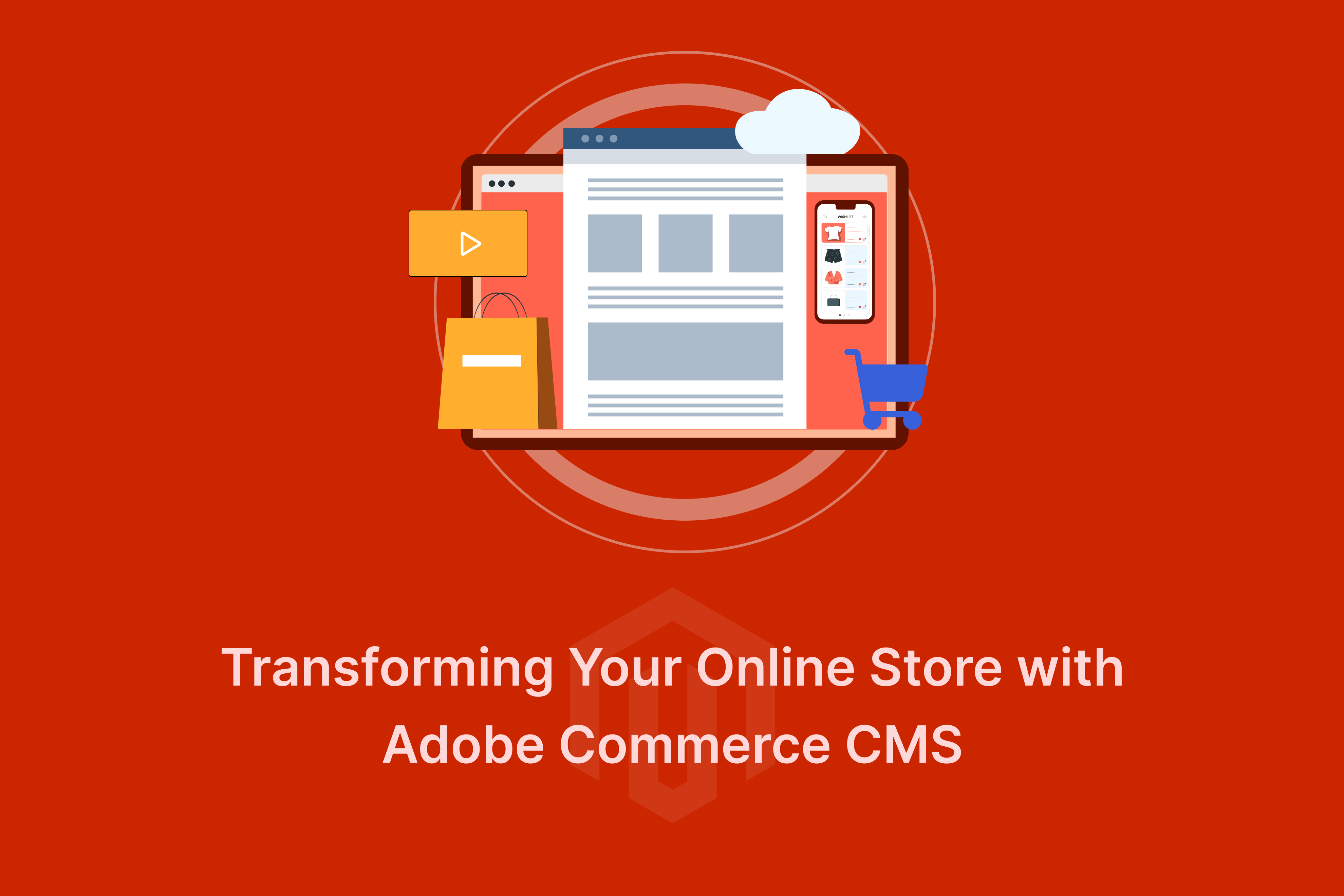A CMS or content management system is a tool or software that enables users to seamlessly manage content on a website without having to code from scratch. E-commerce stores often have the requirements to add, and modify content on specific pages or create a new page such as careers, privacy policy, etc. With Adobe Commerce Magento 2, you don’t have to worry about creating all these from the base programmatically. Magento 2 CMS facilitates a number of options to create and modify web pages on your e-commerce store. So, let's explore more about Adobe Commerce Magento 2 CMS features in this blog.
CMS Pages
In addition to the frequently visited catalog, product, and checkout pages, Adobe Commerce Magento 2 allows you to create CMS pages such as Privacy Policy, About Us, and Terms & Conditions. This can be easily accomplished by navigating to Content > Elements > Pages and clicking Add New Page Button. The What You See Is What You Get (WYSIWYG) editor or Page Builder option enables you to add text, media, images, CMS Blocks, and Widgets to your page without coding knowledge. Furthermore, you can fill in the metadata for SEO purposes and set the URL for the page.
CMS Blocks
Adobe Commerce Magento 2 offers another content management feature called CMS blocks, which can be created in the "Content" section under Elements > Blocks. Similar to pages, these blocks can be edited using a WYSIWYG editor. However, CMS blocks are typically utilized to incorporate new information into existing pages, unlike CMS pages. For instance, you can easily integrate a slider into your home page by utilizing this tool.
CMS Widgets
A widget is a block of code that enables you to showcase various types of content in your store and place it in specific locations. These elements can be dynamic and display real-time data, providing an opportunity for customers to engage with your store. With the Widget tool, it's effortless to incorporate a widget within existing content, including blocks with images and text.
Widgets are versatile and can be used to create landing pages for marketing campaigns or showcase promotional content at specific locations in the store. Additionally, they can add interactive elements such as action blocks for external review systems, voting, and subscription forms. Widgets can also provide navigation elements like tag clouds and image sliders.
In conclusion, Adobe Commerce Magento 2 CMS provides a comprehensive and user-friendly content management system for e-commerce businesses. With its easy-to-use interface and powerful features, merchants can effortlessly create and manage their online store's content, including pages, blocks, and widgets. This functionality allows for increased flexibility and customization, enabling businesses to tailor their online presence to meet their specific needs. Ultimately, Adobe Commerce Magento 2 CMS empowers merchants to create a compelling and engaging shopping experience for their customers, leading to increased sales and customer loyalty.


.jpg?width=352&name=M2%20Page%20Builder%20(1).jpg)

